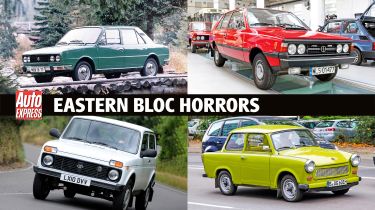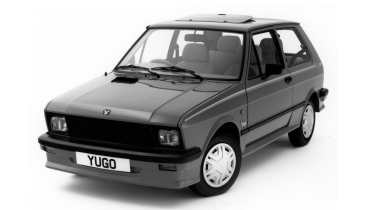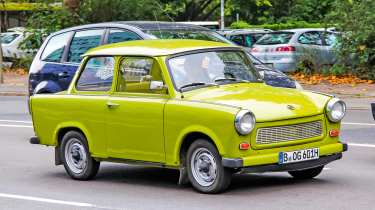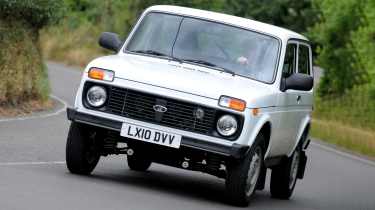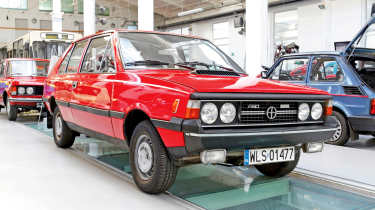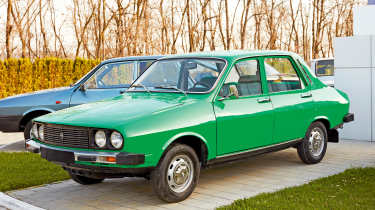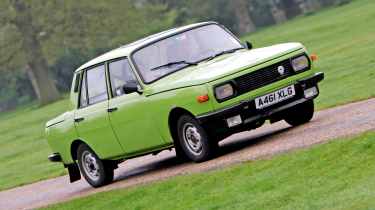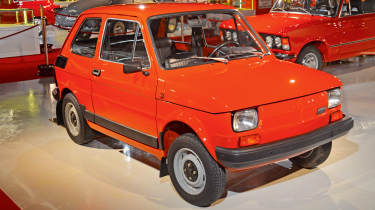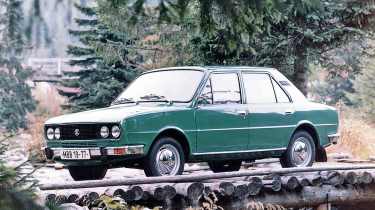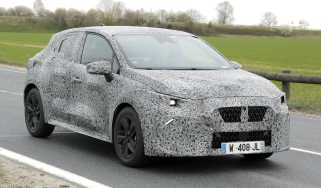Communist cars: 8 Eastern Bloc horrors from behind the Iron Curtain
Eastern Europe now makes great cars. But when it was be hind the Iron Curtain, things were rather different
The car industry is very much a global business now. But it wasn’t always that way. Back in 1989, the world map was entirely different, with much of Eastern Europe languishing behind the Iron Curtain. Then in November that year the Berlin Wall came down, starting a chain of events that ultimately spelled the end for the Soviet Union.
In the years since, we’ve become accustomed to many fantastic models being developed and manufactured in Eastern Europe. But prior to 1989 that generally wasn’t the case – and here we look back at some of the Eastern Bloc’s less celebrated contributions to automotive history.
Yugo 45 (Yugoslavia)
The Balkan region’s most recent contribution to the global car industry has been eye-popping, because Croatia’s Rimac has set a string of records with its 256mph electric Nevera hypercar. Back in the seventies, Croatia was one of the constituent parts of Yugoslavia, a Slavic superstate that inflicted the Yugo 45 on the world.
Made by Zastava in Serbia, this shortened version of the Fiat 127 had a 44bhp engine and was prone to rust. Sales were attempted in the UK and US, with little success, and there was an effort to inject some glamour with a cabrio version. The fact that it spawned a book called ‘The Yugo: The Rise And Fall of the Worst Car in History’ sums up its legacy.
Trabant (East Germany)
The Trabi tours that have become a fun part of visits to Berlin are a vivid illustration that East Germany’s car for the masses is as much a symbol of the former Deutsche Demokratische Republik as the city’s famous wall itself. But don’t be fooled by the nostalgia. The Trabant, first introduced in 1957, was an unpleasantly primitive vehicle with an underpowered two-stroke engine and a unibody chassis.
Its body was made of Duroplast – a composite resin plastic that was innovative for the time – but it lacked even basic kit such as a fuel gauge and seatbelts. It soldiered on for decades, and 1989 saw 150,000 built as demand remained high. But by the time German unification was agreed in October 1990, the end was nigh for the Trabi – not least because of its appalling emissions, which were unwelcome in the West.
Lada Niva (Soviet Union)
First launched 47 years ago in 1977, the Lada Niva is an uncompromising off-roader that’s still being made, having followed its own singular path, and refusing to follow automotive fashion. It was sold officially in the UK in the eighties and nineties, and was still being imported in early 2022, before Putin invaded Ukraine and Russia became an international pariah.
Classic looks and a monocoque construction that endowed it with genuine off-road ability might lull a few misty-eyed romantics into remembering it more fondly than it deserves. It has little to recommend it other than cheapness, though, and a recent update that brought compliance with Euro 5 emissions regulations shows how off the pace it remains.
FSO Polonez (Poland)
A repurposed Polish Fiat that did make it to Britain was the FSO Polonez, which emerged in 1979 with a chassis and engines from the then ancient Polski Fiat 125p saloon. Remarkably, there were some famous names attached to this project, with design legend Giorgetto Giugiaro and ex-VW Group design boss Walter de Silva reputedly involved in creating its hatchback body.
But there was little else fashionable about the Polonez, which couldn’t disguise its prehistoric underpinnings and was pitched at UK buyers as a way of getting Ford Sierra space for Fiesta money. Even that gambit failed, and sales were predictably low for a car that felt decades behind its Western-developed rivals.
Dacia 1310/Denem (Romania)
We’re now accustomed to Dacia cars figuring among Europe’s top-sellers, with buyers lapping up the value-focused models. But the Romanian vehicles weren’t always so highly thought of.
An example was the Dacia Denem family car, brought to Britain in 1983 as a rebadged Dacia 1310. The 1310, and its 1300 predecessor, could be traced back to the Renault 12 of 1969. Its UK arrival was unheralded and a marketing campaign – hailing ‘the very acceptable Dacia Denem’ – did little to attract potential buyers, who were put off by questionable build quality. The 1300 and 1310 gave millions of Romanians mobility, but were way behind Western cars of the era.
Wartburg Knight (East Germany)
Also from the DDR, but not as famous as the Trabant – or notorious, depending on your point of view – was the Wartburg 353, a spacious but spartan family car that made its debut in the mid-sixties. As with most of the models featured here, it was produced and sold cheaply, given the relative lack of resources available behind the Iron Curtain.
Around 1.2 million examples were produced between 1966 and 1988, and it enjoyed success in Hungary, Poland and Bulgaria, as well as its native Germany. The 353 was even brought to Britain, where it was renamed the Knight and promoted with images depicting it outside the Houses of Parliament. But concerns about high emissions from its three-cylinder, two-stroke 991cc engine saw imports stop in 1976.
Polski Fiat 126p (Poland)
When is a Fiat not a Fiat? When it’s a Polski Fiat. The 126p was almost identical to the Italian brand’s 126, and built under licence by Poland’s Fabryka Samochodow Malolitrazowych from 1973 for 27 years.
A low price meant the 23bhp minnow was a massive hit in Poland, where more than 2.6 million were made – including at a plant in Tychy, now home of the Jeep Avenger – and it became a bona fide cultural icon, albeit one prone to rust. Britain got the real-deal Fiat 126, so there was no need to bring the Polski version to the UK. But one famous Western fan is actor Tom Hanks, who was gifted a model by a Polish town after sharing his enthusiasm for it on social media.
Skoda Estelle (Czechoslovakia)
Assessing Skoda’s cars prior to the involvement of the Volkswagen Group in 1991 isn’t as straightforward as it seems. While a long way from the cutting-edge models we are accustomed to today, they were also superior to some of the other cars here – which makes it all the odder that it was Skoda which became the target of unimaginative seventies comedians.
Consider the Estelle (known as the 105, 120 and 125 elsewhere), a rear-engined, rear-wheel-drive small family car that found around 120,000 buyers in the UK between 1977 and 1990. Although far from desirable, it was cheap, easy to maintain and robust, as a string of rallying successes illustrated. While the Estelle wasn’t as appealing as Skoda’s current Kodiaq, other cars were more deserving of being the butt of jokes.
Click here for our list of the 25 coolest cars in the world...
Find a car with the experts
